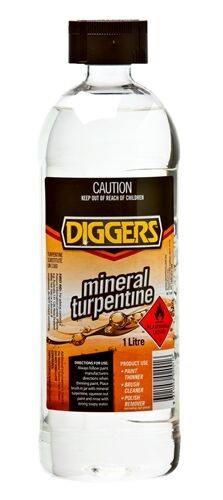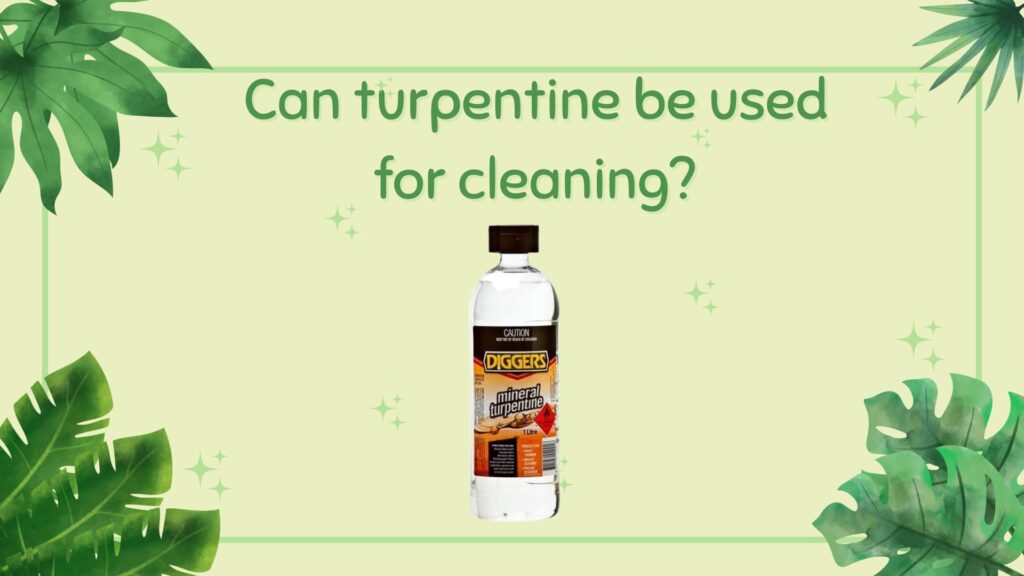In this article, we will explore the advantages and disadvantages of using turpentine for cleaning, as well as alternatives to turpentine that are safer and more eco-friendly.
Turpentine is a natural solvent that has been used for centuries for a variety of purposes. One of its most common uses is as a cleaning agent. Turpentine is a versatile solvent that can be used on a variety of surfaces and can help remove dirt, grime, and even paint stains. However, while turpentine is effective at cleaning, it also comes with some disadvantages.
The Properties of Turpentine
Turpentine is derived from the sap of pine trees and is composed of a mixture of organic compounds. The chemical composition of turpentine includes alpha-pinene, beta-pinene, and limonene. Turpentine is a colorless liquid that has a distinct odor and is highly flammable. As a solvent, turpentine is able to dissolve a variety of substances, making it an effective cleaning agent.
Types of Turpentine for Cleaning
 There are several types of turpentine that can be used for cleaning. The most common types are pure gum spirits of turpentine, rectified turpentine, and paint thinner and turpentine. Pure gum spirits of turpentine are the most natural form of turpentine and are derived directly from the pine tree. Rectified turpentine is a distilled form of turpentine that has been purified to remove impurities. Paint thinner and turpentine is a mixture of turpentine and other solvents that is often used as a thinner for oil-based paints.
There are several types of turpentine that can be used for cleaning. The most common types are pure gum spirits of turpentine, rectified turpentine, and paint thinner and turpentine. Pure gum spirits of turpentine are the most natural form of turpentine and are derived directly from the pine tree. Rectified turpentine is a distilled form of turpentine that has been purified to remove impurities. Paint thinner and turpentine is a mixture of turpentine and other solvents that is often used as a thinner for oil-based paints.
Advantages of Turpentine as a Cleaning Agent
Turpentine has several advantages as a cleaning agent. One of the main advantages is that it is a natural solvent. Unlike many commercial cleaning products, turpentine does not contain harsh chemicals that can be harmful to the environment or to human health. Another advantage of turpentine is its versatility. Turpentine can be used on a variety of surfaces, including wood, metal, and stone. Finally, turpentine is a multi-purpose cleaning agent that can be used for a variety of cleaning tasks.
Disadvantages of Turpentine as a Cleaning Agent
Despite its many advantages, turpentine also has some disadvantages as a cleaning agent. One of the main disadvantages is its toxicity. Turpentine is a highly flammable liquid that can cause skin irritation and respiratory problems if inhaled. Turpentine can also damage certain surfaces, such as plastics and rubber. Finally, turpentine is not an eco-friendly cleaning agent and can have negative impacts on the environment.
Turpentine Alternatives for Cleaning
Fortunately, there are several alternatives to turpentine that are safer and more eco-friendly. One alternative is to use water and soap. This is a simple and effective way to clean many surfaces, including floors, countertops, and walls. Another alternative is vinegar. Vinegar is a natural cleaning agent that can be used to remove stains and odors from a variety of surfaces. Baking soda is another natural cleaning agent that can be used to clean and deodorize surfaces. Finally, there are several commercial cleaning products that are made with natural and eco-friendly ingredients.
How to Use Turpentine for Cleaning
If you choose to use turpentine for cleaning, it is important to take precautions to ensure your safety. Always wear gloves and protective eyewear when handling turpentine. Turpentine should be used in a well-ventilated area, and it should never be used near an open flame. Turpentine should also be stored in a cool, dry place away from heat and flammable materials.
When using turpentine for cleaning, it is important to dilute it properly. Pure gum spirits of turpentine can be used undiluted for some cleaning tasks, but for others, it may need to be diluted with water or another solvent. Always follow the manufacturer’s instructions for dilution and use.
Cleaning with Turpentine: Common Applications
Turpentine can be used for a variety of cleaning tasks. One common use of turpentine is for cleaning paintbrushes. Turpentine can help dissolve and remove paint from the bristles of the brush, making them easier to clean. Turpentine can also be used to remove paint stains from clothes and fabrics. Simply apply a small amount of turpentine to the stain and blot with a clean cloth.
Turpentine can also be used for cleaning floors and wooden furniture. Dilute the turpentine in water and use a clean cloth or mop to apply the solution to the surface. For cleaning kitchen surfaces, turpentine can be used to remove grease and grime. Dilute the turpentine in water and use a sponge or scrub brush to apply the solution to the surface.
Tips for Cleaning with Turpentine
When using turpentine for cleaning, it is important to take certain precautions to ensure your safety and the safety of others. Always test the turpentine on a small, inconspicuous area first to make sure it will not damage the surface. When using turpentine, always wear protective gloves, eyewear, and clothing. Always work in a well-ventilated area and avoid inhaling the fumes. When finished using turpentine, dispose of it safely and in accordance with local regulations.
Turpentine and Health: Precautions and Safety Measures
Turpentine can be harmful to human health if not used properly. Exposure to turpentine can cause skin irritation, respiratory problems, and other health issues. If you experience any symptoms of exposure to turpentine, such as dizziness, headaches, or skin irritation, seek medical attention immediately. To minimize the risks of exposure to turpentine, always work in a well-ventilated area and wear protective gloves, eyewear, and clothing.
Environmental Concerns and Turpentine Use:
Turpentine is not an eco-friendly cleaning agent and can have negative impacts on the environment. When using turpentine for cleaning, it is important to dispose of it properly and in accordance with local regulations. Do not pour turpentine down the drain or into the trash. Instead, contact your local hazardous waste disposal facility to find out how to dispose of turpentine safely.
Frequently Asked Questions (FAQs):
- Is turpentine safe to use as a cleaning agent?
Turpentine can be effective as a cleaning agent, but it is not without risks. Turpentine can be toxic if not used properly and can cause skin irritation and respiratory problems. Always take precautions when using turpentine for cleaning.
- How does turpentine compare to other cleaning agents?
Turpentine is a natural solvent that can be effective for certain cleaning tasks. However, there are other alternatives that are safer and more eco-friendly, such as water and soap, vinegar, and baking soda.
- Can turpentine be used to clean anything?
Turpentine can be used to clean a variety of surfaces, including wood, metal, and stone. However, it can cause damage to certain surfaces, such as plastics and rubber.
- How do I know if a surface is safe to clean with turpentine?
Always test the turpentine on a small, inconspicuous area first to make sure it will not damage the surface.
- What are some safe and eco-friendly alternatives to turpentine?
Some safe and eco-friendly alternatives to turpentine include water and soap, vinegar, baking soda, and commercial cleaning products made with natural and eco-friendly ingredients.
Conclusion
Turpentine can be an effective cleaning product for a variety of surfaces, but it also comes with some risks and disadvantages. It is important to take precautions to ensure your safety and the safety of others when using turpentine for cleaning. There are also several alternatives to turpentine that are safer and more eco-friendly. By weighing the pros and cons of using turpentine for cleaning and exploring alternatives, you can make an informed decision about which cleaning agent is best for your needs.

